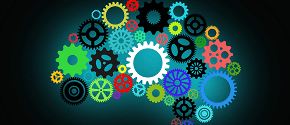
The A.I. revolution will not be televised
You will not have to stay home. You will not have to plug in, boot up or log out. You may be in the driver’s seat, but who will be driving?
Well, first, apologies to the late Gil Scott Heron for butchering his famous poem “The Revolution Will Not Be Televised.” In it, Heron talks about a fundamental shift in power from passive observation to active participation in societal change which won’t be televised, but will be live. More on that a bit later.
Second – a bit of clarification is in order. To be sure, there is a revolution in artificial intelligence1 happening right now. This revolution, however, isn’t the pop culture horror story of smart machines rising up and conquering humanity that we see played out in on our screens, big and small. The real revolution is happening behind our screens (large and small) in the ways that machine intelligence is helping us do everything from prioritising our days to interacting with our customers.
From Passive to Active Participation
In the first half of the decade, it seemed as though you couldn’t get away from the term “big data.” With the increase in the connected devices generating a deluge of new information, companies were struggling to make sense of it all. For most, the biggest hurdle was trying to gain a single view of the truth through their data. For a handful of companies, having solved the issue of managing all their data (more or less), they turned their attention to developing algorithms that allowed companies to create sophisticated predictive analytics models to help drive human decision-making.
An even smaller subset of companies has been able to make the shift from predictive analytics to prescriptive analytics, or allowing computer agents to take data and make actions in the real world. And that’s at the heart of machine intelligence. Take banking, for instance. Their evolution from data to machine intelligence may look something like this: first, the challenge was in trying to figure out if a customer had a mortgage, a car loan, a savings account and a credit card with the bank (because that data was often in different systems). Then, predictive analytics would help determine which new products and services that customer would be most likely to purchase, and when they’d be most likely to do so.
Adding “basic” machine intelligence to the mix, the bank is able to automatically serve up a customised offer to the customer on their mobile when they stop for a period inside a car dealership, or when they visit a branch. Taken a few steps further in the journey, and the bank will be able to not only serve up offers, but with machine intelligence, their automated agents (or bots) will be able to interact with that customer in natural language to solve problems, make new offers, or have a conversation that connects that customer more closely to the brand.
Who’s in the Driver’s Seat?
One of the most visible examples of real-world machine intelligence is the driverless car: multiple sources providing real-time data to a sophisticated, yet familiar machine in a way that could fundamentally change the way we live. The driverless car is also an example, in countless movies and TV shows, of our basic fears of “artificial intelligence”: a sentient two-ton, turbo-charged killing machine hell-bent on destruction! (Sensational enough for you?) But sentience and intelligence really are worlds apart, and in the way machine intelligence is being developed, we humans are firmly in the driver’s seat. Machine intelligence research is centred on the ability to understand and extend our actions – it’s a symbiotic relationship that requires human guidance to learn. So what will we teach them?
Return on Failure
If machines pattern themselves – or more aptly, if we program them to pattern themselves – on human behaviour, it’s a pretty daunting task. It requires a sophisticated understanding of the mechanics of human behaviour which is quite often bewildering and illogical even to other humans. It requires a great deal of trial and error. We can create virtual environments in which machine algorithms try, fail, learn and try again. In the less controlled environment of the real world, these experiments in machine learning start to become reflections of society – the good and the bad. At its worst…well, there are stories. But at its best it can connect with some of our most important and basic needs, from food and shelter to love and friendship.
Rise of the Humans
So where will this A.I. machine intelligence revolution take us? What implications will it have for individuals, businesses and society at large? The truth is, nobody knows. We have a pretty good understanding of what’s now and what’s next, and some reasonably good assumptions of what’s after that (from the technological to the philosophical). We gathered in London on 5th May at the AI Summit to discuss these themes and more. Microsoft UK’s Chief Envisioning Officer, Dave Coplin, talked about the role of human and machine intelligence as we move towards the algorithmic business. And although we talked about this revolution in London, it wasn’t televised. It was live.
Take part in the broader AI and data discussion, live, at one of our Data Culture events
1: While the broader term A.I. (artificial intelligence) is popular in the media, there are more accurate or appropriate terms for this revolution such as machine learning, ambient technology, augmented humanity and, as I use for the remainder of the blog: machine intelligence.




